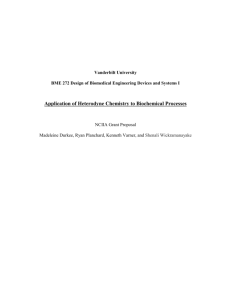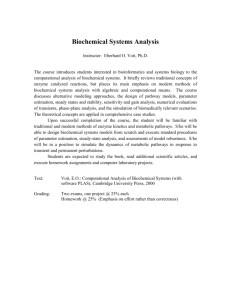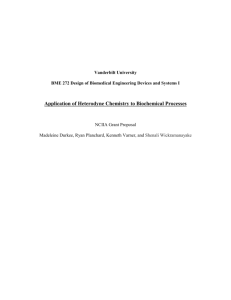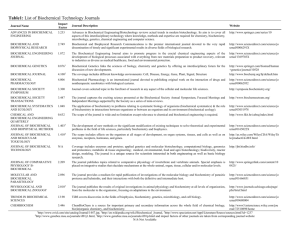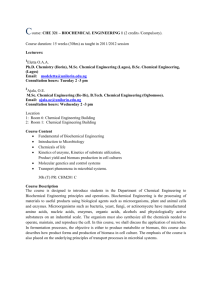Past Project
advertisement
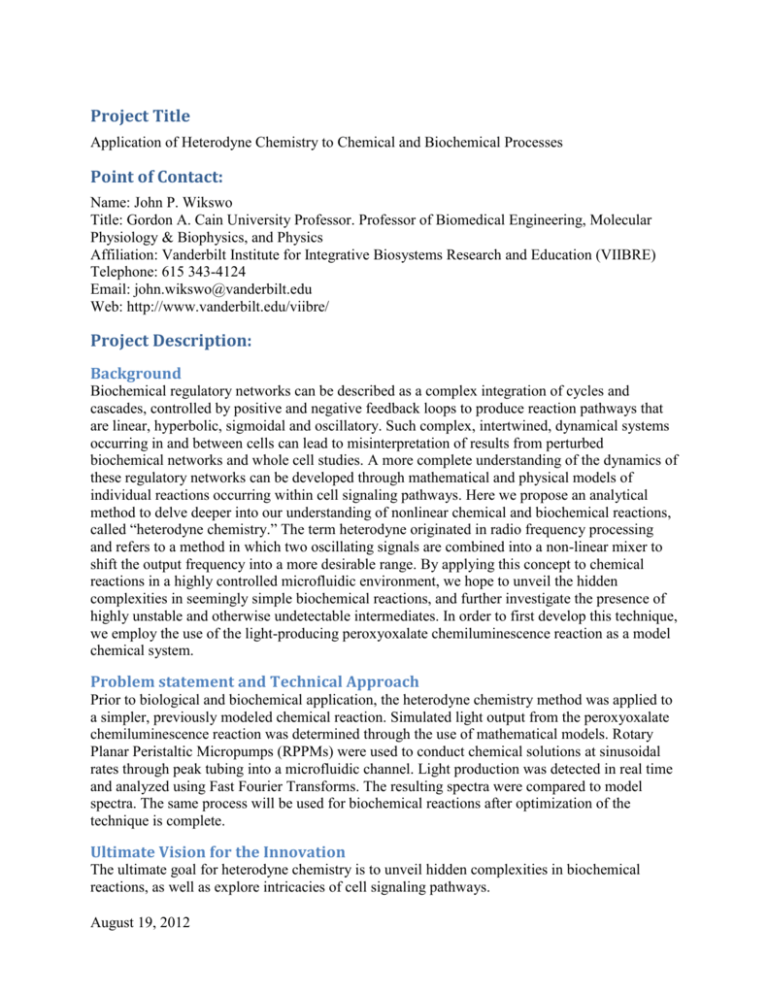
Project Title Application of Heterodyne Chemistry to Chemical and Biochemical Processes Point of Contact: Name: John P. Wikswo Title: Gordon A. Cain University Professor. Professor of Biomedical Engineering, Molecular Physiology & Biophysics, and Physics Affiliation: Vanderbilt Institute for Integrative Biosystems Research and Education (VIIBRE) Telephone: 615 343-4124 Email: john.wikswo@vanderbilt.edu Web: http://www.vanderbilt.edu/viibre/ Project Description: Background Biochemical regulatory networks can be described as a complex integration of cycles and cascades, controlled by positive and negative feedback loops to produce reaction pathways that are linear, hyperbolic, sigmoidal and oscillatory. Such complex, intertwined, dynamical systems occurring in and between cells can lead to misinterpretation of results from perturbed biochemical networks and whole cell studies. A more complete understanding of the dynamics of these regulatory networks can be developed through mathematical and physical models of individual reactions occurring within cell signaling pathways. Here we propose an analytical method to delve deeper into our understanding of nonlinear chemical and biochemical reactions, called “heterodyne chemistry.” The term heterodyne originated in radio frequency processing and refers to a method in which two oscillating signals are combined into a non-linear mixer to shift the output frequency into a more desirable range. By applying this concept to chemical reactions in a highly controlled microfluidic environment, we hope to unveil the hidden complexities in seemingly simple biochemical reactions, and further investigate the presence of highly unstable and otherwise undetectable intermediates. In order to first develop this technique, we employ the use of the light-producing peroxyoxalate chemiluminescence reaction as a model chemical system. Problem statement and Technical Approach Prior to biological and biochemical application, the heterodyne chemistry method was applied to a simpler, previously modeled chemical reaction. Simulated light output from the peroxyoxalate chemiluminescence reaction was determined through the use of mathematical models. Rotary Planar Peristaltic Micropumps (RPPMs) were used to conduct chemical solutions at sinusoidal rates through peak tubing into a microfluidic channel. Light production was detected in real time and analyzed using Fast Fourier Transforms. The resulting spectra were compared to model spectra. The same process will be used for biochemical reactions after optimization of the technique is complete. Ultimate Vision for the Innovation The ultimate goal for heterodyne chemistry is to unveil hidden complexities in biochemical reactions, as well as explore intricacies of cell signaling pathways. August 19, 2012 Business development interest None until the heterodyne chemistry process has been fully optimized for biochemical reactions. Resources Available to the Team The heterodyne chemistry team will use the facilities of the Vanderbilt Institute for Integrative Biosystems Research and Education (VIIBRE) to fabricate microfluidic devices and pumps, as well as run light-producing reactions employing the heterodyne chemistry technique. Preferred Student Team Qualifications Team members are preferred to have a strong chemical and math background, specifically in understanding Fourier frequency spectrums. A general understanding of microfluidics is also preferred. June 17, 2012 2

